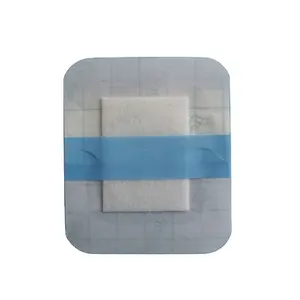
Medical Waterproof Absorb Transparent Wound Pu Film Dressing Island Wound Plaster Wound Basic Dressing








Opsite dressings are a specialized category of medical supplies designed to provide a protective barrier over wounds. These dressings are crafted from thin, transparent materials that allow healthcare providers to monitor the healing process without removing the dressing, minimizing the risk of infection and disturbance to the wound site.
There are several types of opsite dressings tailored to different medical needs. Transparent wound dressings are commonly used for their flexibility and adhesive properties, suitable for a variety of wound sizes and types. Self-adhesive options offer ease of application, making them a practical choice for both professional and personal first aid. The versatility of these dressings extends to various medical settings, including hospitals, clinics, and home care.
The materials used in opsite dressings are selected for their durability and comfort. Polyurethane (PU) is a common material due to its breathable yet moisture-resistant nature. This ensures that the wound remains dry and properly ventilated, promoting faster healing. The dressings are available in different classifications, such as class II and class I, indicating their regulatory standards and suitability for different wound care scenarios.
The advantages of using opsite dressings include their impermeability to water and bacteria, which provides a secure environment for wound healing. Their transparent nature is not only convenient for monitoring but also reduces the need for frequent dressing changes, thus lessening discomfort for the patient. Additionally, the breathable quality of these dressings helps to maintain optimal moisture levels at the wound site, a critical factor in the healing process.
When selecting opsite dressings, certifications such as ISO13485 and TUV are important indicators of quality and compliance with international standards. These certifications ensure that the products meet rigorous health and safety criteria, providing reassurance to both suppliers and buyers about the reliability of the dressings.
Choosing the right opsite dressing involves considering factors such as the wound type, size, and location. It is also essential to determine whether a disposable or a more durable dressing is required based on the intended application. While all dressings aim to protect and heal, selecting the appropriate type can significantly impact the effectiveness of the treatment and the comfort of the patient.